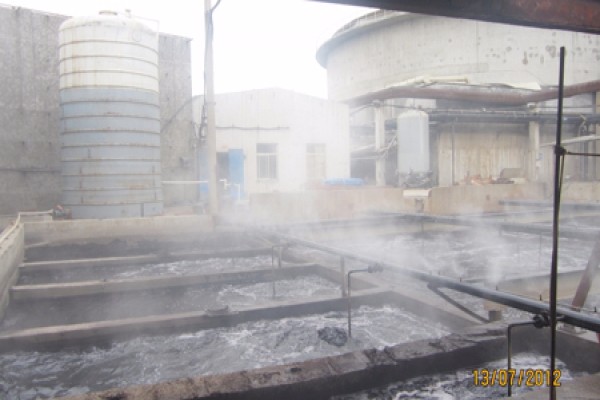The distance between the garbage station and residential buildings
Is there a regulation on how far a waste station should be from residential buildings?
The number and planning of transfer stations for daily waste treatment equipment depend on the type of collection vehicles, collection scope, and waste transfer volume, and should meet the following requirements:
(1) A small transfer station should be set up every 0.7-1km2, with a land area of no less than 100m2 and a distance of no less than 5m from surrounding buildings.
(2) A large and medium-sized transfer station is set up every 10-15km2, and its land area is determined based on the daily transfer volume.
(3) A small waste collection and transfer station for residents to directly dump waste, with a collection service radius of no more than 200m and a land area of no less than 40m2.
Usage of waste station:
Residential areas, factory areas, and other daily waste transfer stations for residents and housing construction. Mainly used for temporary accumulation of waste, and then regularly transported to large waste treatment stations or landfills through waste transfer vehicles and other waste vehicles.
Construction requirements for waste stations:
Based on the minutes of the Municipal Government's meeting on the discussion and treatment of waste transportation and other issues, learning from the experiences of cities such as Hong Kong and Guangzhou, and combining with the selection of waste compactness transportation equipment, the basic requirements for the planning and construction of waste transportation stations are as follows:

1、 Principles of Planning Site Selection
1. The construction of waste transfer stations should occupy independent land; Additional buildings can be considered in areas such as new development zones, industrial zones, newly built large residential areas, high-rise buildings, and old city (village) renovations; If you are unable to choose a land, you can consider choosing an oasis, mountain edge, or building an underground or semi underground area.
2. The construction of waste transfer stations should be based on planned population, per capita waste generation, and waste station transfer capacity.
3. The site selection of waste transfer stations should fully consider their impact on the surrounding environment, and all pollution indicators should meet corresponding requirements.
4. The transfer station of daily waste treatment equipment should be convenient for electricity, water, and transportation; Three phase power lines should be installed, with a power consumption of 25 kilowatts per compartment; Each station needs to be equipped with a 1.5 inch water meter; The width of the entrance road should be ≥ 8m, and the pedestrian passage for entering the toilet should be separated from the entrance passage for small motor vehicles or carts.
5. It should be kept as far away from residential areas as possible, with a minimum distance of 5m from residential areas;
6. It should be easy to connect with the municipal sewage pipeline network, and the diameter of the sewage pipe should be ≥ 300mm; Concealed pipes should be used to discharge leakage liquid inside the station, and the diameter of the discharge pipe inside the station should be ≥ 200mm.
2、 Construction principles
1. It should be aesthetically pleasing, practical, and eco-friendly, harmonious with the surrounding environment.
2. Waste stations should be the main focus, and the construction of public toilets and sanitation tool rooms should be appropriately considered according to the actual situation.
3、 Considering the actual situation of construction land, the planning of construction land for waste transfer stations (public toilets) can be divided into two types: normal land use plan and severe land use plan. In areas where conditions permit, normal land use plan should be used, and severe land use plan can be used in areas such as built-up areas and prosperous commercial areas. The transfer station should mainly have two carriages, with single and three carriages as auxiliary.
4、 Pollution control
A deodorization system should be installed, and a negative pressure exhaust deodorization system should be installed within 10 meters of residential areas and commercial buildings; Sound insulation and noise reduction methods should be adopted; Should be equipped with a high-pressure flushing vehicle system; If the leakage liquid cannot be directly discharged into the sewage pipe network, a sealed leakage liquid storage tank should also be set up.
5、 Waste collection mode
Standard high-density polyethylene drums should be used to collect waste, and small motor vehicles or electric scooters should be used to transport the waste in drums (bags) to transfer stations.
The article originates from a deodorant manufacturer http://www.scneng.com.hk
-
06-11
"Environmental Doctor" Du Siyuan: Environmental Protection is a Lifestyle Attitude
There is a Hong Kong compatriot in Jiangmen who often frequents various farms and plantations, walks in mechanical factories, and is seen by others as the nemesis of environmental problems. He conside
-
03-16
Deodorant manufacturer: Deodorants reduce soil pollution
Waste is a chaotic mixture of various components. The accumulation of debris on the surface of soil can cause some chemical reactions, releasing harmful gases, which can lead to soil pollution and eve
-
12-01
Deodorant Manufacturers: Differences between Microbial Deodorants and Traditional Deodorants
The waste that is not needed in our daily life and work is called waste. Due to the large amount of waste discharged and the complex categories, there are great difficulties in reducing waste and deod
-
11-08
Application of Deodorant Manufacturers in Domestic Waste Treatment
Garbage is the waste generated in everyone's daily life and work. Due to its large discharge volume and complex and diverse composition, it poses great difficulties in reducing and deodorizing wa
